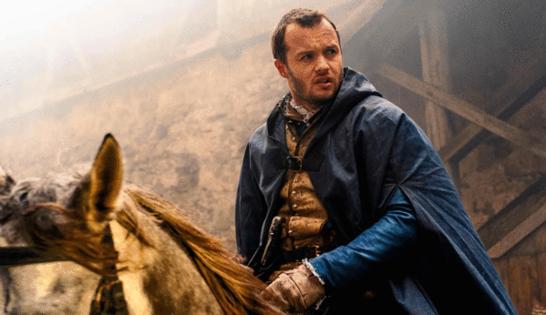Review: Based on CJ Sansom's novel, 'Shardlake' sets a murder mystery in Tudor England
Published in Entertainment News
Variation on a theme is the essence of detective fiction, dressing the old beloved tropes in new clothes. Pick any job — plumber, rodeo clown, TV critic — add "detective" and you've got your main character. (You might even do something with a detective who is also a detective — I'm not sure what, exactly, but I smell some metafictional opportunities there.) Choose a date, in history or the future, like you're the Doctor piloting the TARDIS, and you have your setting. Somebody gets murdered, someone solves it. Elementary.
"Shardlake," which premiered Wednesday on Hulu, gives us Matthew Shardlake, a 16th-century lawyer turned reluctant, then committed sleuth. Adapted from "Dissolution," the first of a series of "Shardlake" novels by C.J. Sansom, who died April 27, it's set in Tudor England, with a plot animated by historical details. The year is 1537, and Henry VIII, who has recently executed wife No. 2, Anne Boleyn, has also severed the country from the Catholic Church; he's now moving on to dismantle the monasteries, ostensibly to liberate their wealth — you know, to give it to the people, like that ever happens.
Scheduled first to go is St. Donatus in the fictional Sussex port of Scarnsea, where a representative of the king has turned up decapitated. (As in an Agatha Christie or "Midsomer Murders," this will not be the only dead body to appear before we're out.) Henry's right-hand man, Thomas Cromwell (Sean Bean), dispatches ultra-competent London lawyer Matthew Shardlake (Arthur Hughes) to investigate, and also to uncover evidence that will provide a legal pretext for shutting down the monastery.
Accompanying him, on Cromwell's orders and not to Shardlake's liking, is Jack Barak (Anthony Boyle, just seen as John Wilkes Booth in "Manhunt"), flashy, flirtatious and impetuous where Shardlake is sober, deep and thoughtful. Shardlake's wise housekeeper, Joan (Kimberley Nixon), calls Barak "Codpiece."
Arriving at the monastery, Shardlake and Barak find Dr. Goodhap (Matthew Steer), who had accompanied the king's murdered commissioner, holed up in his room, refusing food for fear of being poisoned. The monks who terrify him come with a variety of agendas, some self-serving, some religious; some are sweet, some are violent, but all are understandably resistant to seeing their home torn down and livelihood scotched.
The period monasterial setting recalls the '90s series "Cadfael," starring Derek Jacobi as a 12th-century monk-detective, and also Umberto Eco's "The Name of the Rose," set in the 14th century, which was turned into a 1986 film and a 2019 miniseries, with Sean Connery and John Turturro as its tonsured Sherlock, respectively. Like those characters, Shardlake is an independent thinker, ahead of his time, kindly, rational; his "currency is truth and justice." ("My role is to prevent people in power from abusing their power," he says, quixotically.) At the same time, he's enough of a company man to trust Cromwell more than any viewer will, and to accept the official story of the Boleyn affair, which sneaks in by way of connected subplot.
Sansom gave Shardlake a deformed spine — unkind folks call him "crookback" — and, along with the prosthetics, Hughes, born with radial dysplasia, brings his own foreshortened, twisted right arm. This makes him not a jot less the hero, or action hero. The actor, who anchors every scene he plays, has charisma to spare, and, assuming an audience arrives, this will one day be characterized as a star-making performance. But his disability does nag at Shardlake's mind at times; that Alice (Ruby Ashbourne Serkis), the only woman in the abbey, is attracted to Barak triggers one of the lawyer's occasional soliloquies: "Although I can't wear a codpiece that would catch the eye, I could catch the eye for a good reason."
Adapted by Stephen Butchard ("The Good Mothers") in four relatively lean, well-packed episodes, the series includes a complement of classic procedural scenes: examining the body, reading the crime scene, analyzing clues, checking alibis and gathering the suspects together for a breakdown of the crime. The atmospheric production is long on mood and mist and dark places; the monastery, which one would sooner call a castle, dominates the landscape like something from an old horror movie. It's no surprise to learn that the series was partially filmed in Transylvania. We are on unfamiliar familiar ground, and it feels good.
———
'SHARDLAKE'
Rating: TV-14
How to watch: Hulu
———
©2024 Los Angeles Times. Visit latimes.com. Distributed by Tribune Content Agency, LLC.







Comments